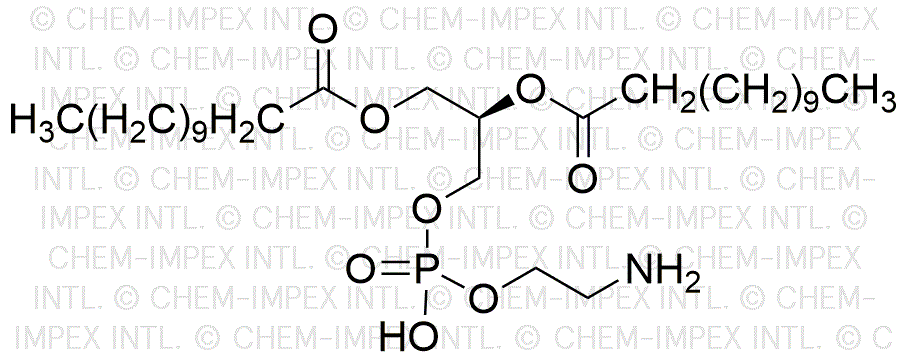1,2-Dilauroyl-sn-glycero-3-phosphoethanolamine is widely utilized in research focused on:
- Drug Delivery Systems: This compound is often used in formulating liposomes, which are tiny vesicles that can encapsulate drugs, enhancing their delivery and bioavailability in targeted therapies.
- Biotechnology: It serves as a key component in the development of biomaterials for tissue engineering, promoting cell adhesion and growth, which is crucial for regenerative medicine.
- Vaccine Development: This chemical is employed in the formulation of adjuvants that boost the immune response in vaccines, making them more effective in preventing diseases.
- Cosmetic Formulations: Its emulsifying properties make it valuable in cosmetic products, helping to stabilize formulations and improve skin absorption.
- Research in Membrane Biology: This compound is used to study lipid bilayers and membrane dynamics, providing insights into cellular processes and the development of new therapeutic strategies.
General Information
Properties
Safety and Regulations
Applications
1,2-Dilauroyl-sn-glycero-3-phosphoethanolamine is widely utilized in research focused on:
- Drug Delivery Systems: This compound is often used in formulating liposomes, which are tiny vesicles that can encapsulate drugs, enhancing their delivery and bioavailability in targeted therapies.
- Biotechnology: It serves as a key component in the development of biomaterials for tissue engineering, promoting cell adhesion and growth, which is crucial for regenerative medicine.
- Vaccine Development: This chemical is employed in the formulation of adjuvants that boost the immune response in vaccines, making them more effective in preventing diseases.
- Cosmetic Formulations: Its emulsifying properties make it valuable in cosmetic products, helping to stabilize formulations and improve skin absorption.
- Research in Membrane Biology: This compound is used to study lipid bilayers and membrane dynamics, providing insights into cellular processes and the development of new therapeutic strategies.
Documents
Safety Data Sheets (SDS)
The SDS provides comprehensive safety information on handling, storage, and disposal of the product.
Product Specification (PS)
The PS provides a comprehensive breakdown of the product’s properties, including chemical composition, physical state, purity, and storage requirements. It also details acceptable quality ranges and the product's intended applications.
Certificates of Analysis (COA)
Search for Certificates of Analysis (COA) by entering the products Lot Number. Lot and Batch Numbers can be found on a product’s label following the words ‘Lot’ or ‘Batch’.
*Catalog Number
*Lot Number
Certificates Of Origin (COO)
This COO confirms the country where the product was manufactured, and also details the materials and components used in it and whether it is derived from natural, synthetic, or other specific sources. This certificate may be required for customs, trade, and regulatory compliance.
*Catalog Number
*Lot Number
Safety Data Sheets (SDS)
The SDS provides comprehensive safety information on handling, storage, and disposal of the product.
DownloadProduct Specification (PS)
The PS provides a comprehensive breakdown of the product’s properties, including chemical composition, physical state, purity, and storage requirements. It also details acceptable quality ranges and the product's intended applications.
DownloadCertificates of Analysis (COA)
Search for Certificates of Analysis (COA) by entering the products Lot Number. Lot and Batch Numbers can be found on a product’s label following the words ‘Lot’ or ‘Batch’.
*Catalog Number
*Lot Number
Certificates Of Origin (COO)
This COO confirms the country where the product was manufactured, and also details the materials and components used in it and whether it is derived from natural, synthetic, or other specific sources. This certificate may be required for customs, trade, and regulatory compliance.

